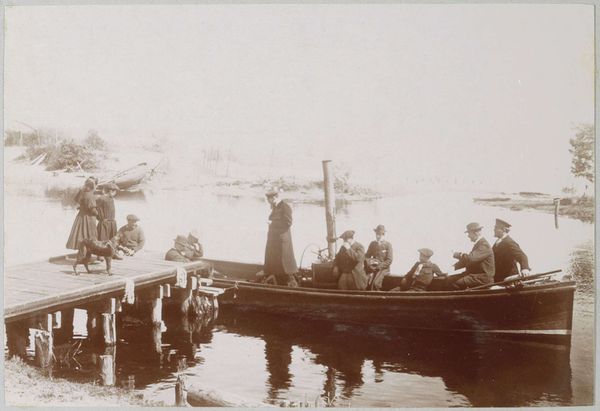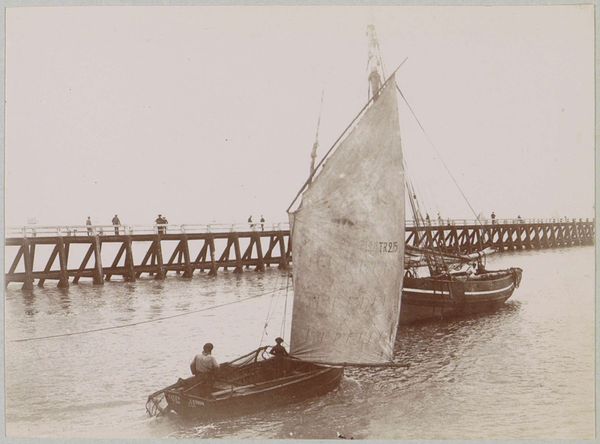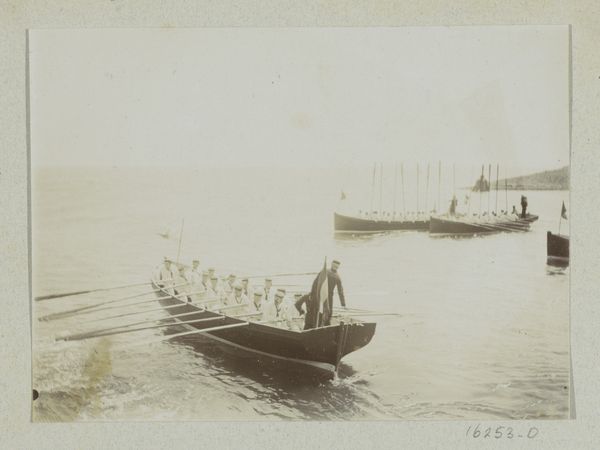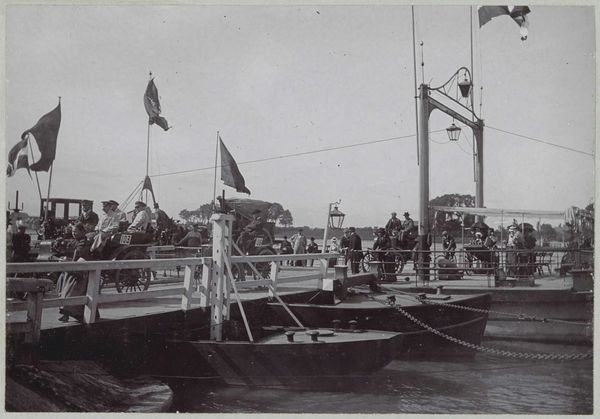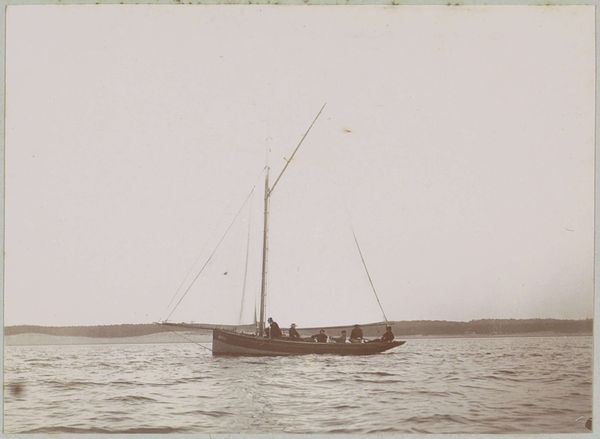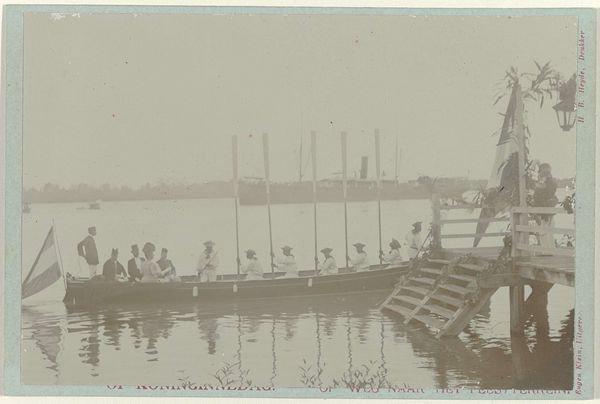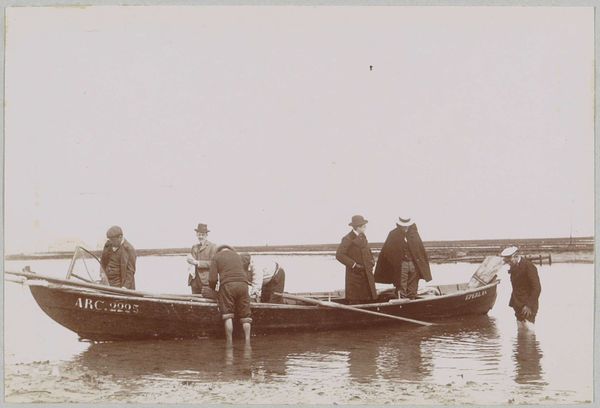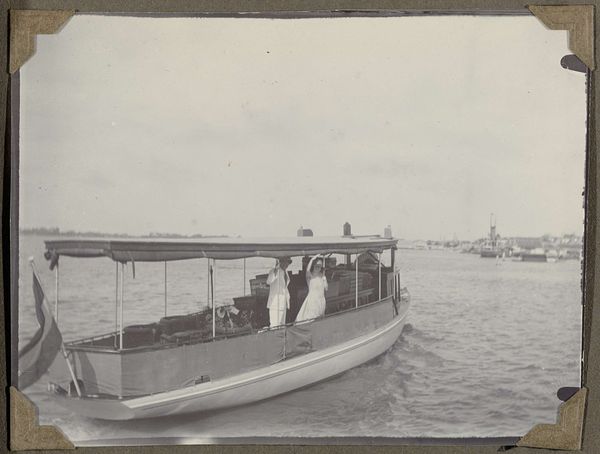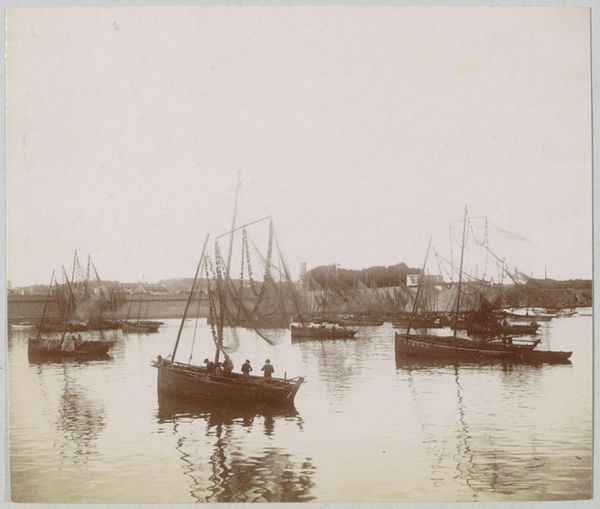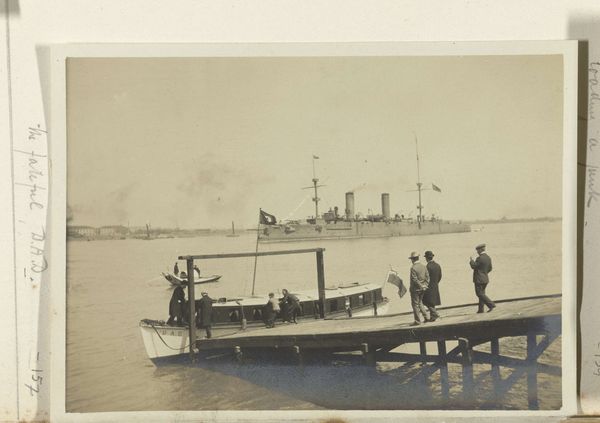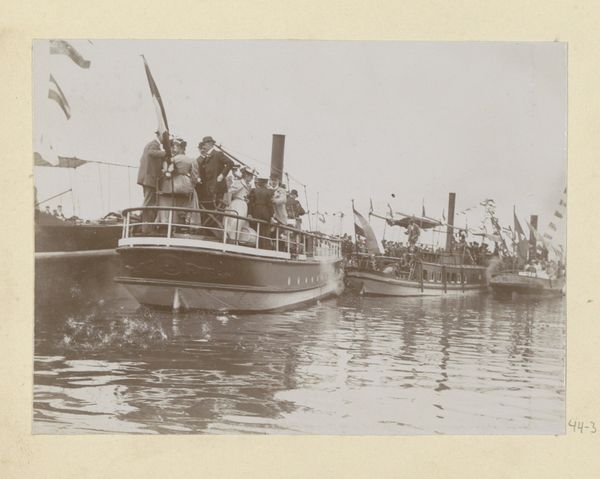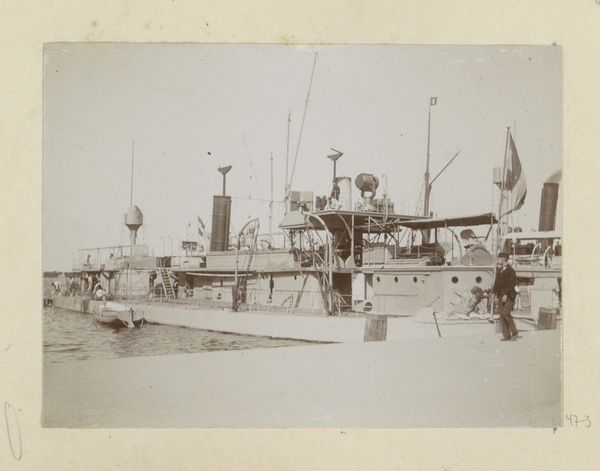
Vrouw wordt uit zeilboot naar de oever gedragen, vermoedelijk ter hoogte van Le Moulleau bij Arcachon 1897
0:00
0:00
delizy
Rijksmuseum
Dimensions: height 79 mm, width 109 mm
Copyright: Rijks Museum: Open Domain
Curator: Let's delve into this intriguing gelatin-silver print from 1897. The Rijksmuseum holds this photograph, its title a bit of a mouthful: "Vrouw wordt uit zeilboot naar de oever gedragen, vermoedelijk ter hoogte van Le Moulleau bij Arcachon," which translates to "Woman is carried from a sailboat to the shore, presumably near Le Moulleau at Arcachon." What's your initial take? Editor: It strikes me as strangely tender and melancholic. The washed-out tones create this sense of fragile impermanence. Who is the woman being carried, and what narratives of gendered expectations and vulnerability are woven into this scene? Curator: Absolutely. And consider the labor involved in the act of carrying itself – the physicality of the men wading into the water, their postures. This isn’t a simple transfer; it’s a transaction of support, yet simultaneously, potentially, a subtle power dynamic. It brings to mind the development of leisure activities and social class around the turn of the century. Who were the photographers documenting these activities? Editor: I agree, and it would be useful to research Delizy, the photographer. How much were they actively involved in constructing this image? I'm immediately curious as to who holds the power dynamic behind the lens? The very act of documentation makes me wonder if this event represents more of a staged, constructed presentation rather than a purely documentary perspective. What sociopolitical lens might Delizy be employing, consciously or subconsciously? What are their own relationships to those being pictured? Curator: That opens another area of investigation. There is such texture, a real sense of a fleeting moment made concrete by early photographic processes and what we can learn about that technological process is fascinating in and of itself. This process offers insight into the development of modern image making, mass culture and mass image manipulation we grapple with even now. Editor: The act of documentation gives agency in some respects, yet perhaps it steals it from those being photographed, in another regard. Curator: A perfect tension to hold as we continue to investigate this piece. Thanks for bringing those dynamics to our attention. Editor: Likewise. A poignant view into past and present concerns.
Comments
No comments
Be the first to comment and join the conversation on the ultimate creative platform.
